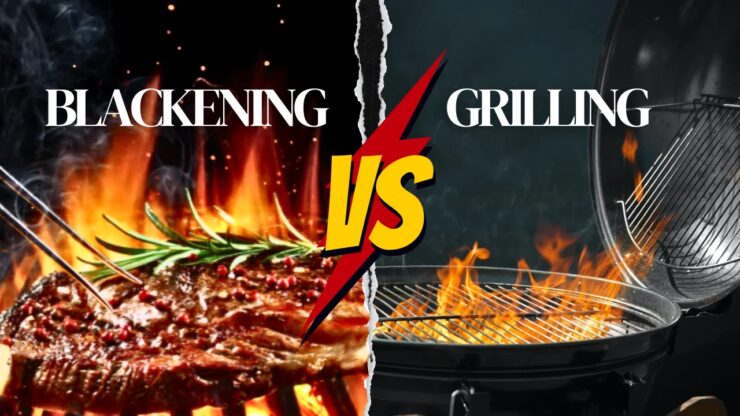In the vast world of culinary delights, cooking techniques play a pivotal role in creating flavors that tantalize our taste buds. Two popular methods that often take center stage are blackening and grilling.
Whether you’re a seasoned food enthusiast or a passionate vegetarian looking for new ways to elevate your dishes, understanding the differences between these techniques can open up a world of delicious possibilities.
Blackening and grilling are both widely celebrated methods known for imparting distinct flavors and textures to various ingredients. While they may seem similar at first glance, they possess unique characteristics that set them apart.
We dive into the nuances of blackening and grilling, shedding light on their differences, advantages, and ideal applications. Come embark on a culinary journey where sizzling flavors and textures take center stage as we explore the intriguing differences between blackening and grilling.
Understanding Blackening
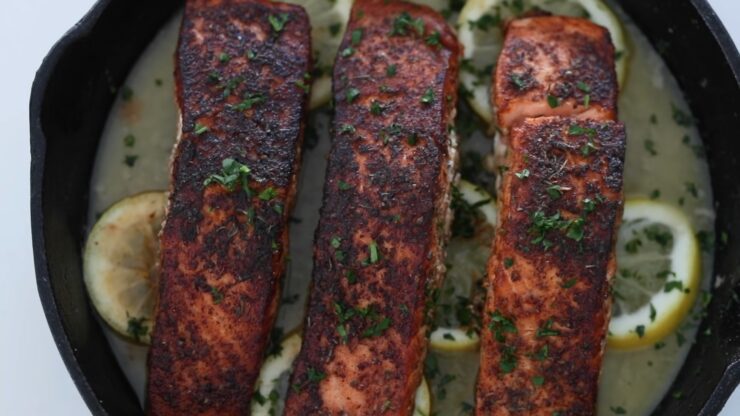
Definition
Blackening is a method that adds a bold and smoky flavor to ingredients by searing them at high heat. It involves coating the food in a mixture of spices and then cooking it in a hot skillet or griddle. The result is a dark, flavorful crust that forms on the surface, giving the dish its characteristic “blackened” appearance.
Originating in the heart of Cajun cuisine, blackening gained popularity in the 1980s, thanks to the renowned chef Paul Prudhomme. This technique was inspired by traditional cooking methods used in Louisiana, where bold and robust flavors are highly cherished.
The essence of blackening lies in the spices and seasonings used in the process. While often associated with meat and seafood, it can also be adapted to vegetarian dishes, allowing you to explore a world of possibilities for flavor-packed plant-based creations.
The Process
Ingredients and Seasonings
Blackening relies on a well-balanced blend of spices and seasonings to create its signature flavor profile. The typical spice mixture includes ingredients such as paprika, cayenne pepper, thyme, oregano, garlic powder, onion powder, and salt.
This combination offers a harmonious balance of heat, earthiness, and aromatic notes. Adjusting the spice levels allows for customization based on personal preferences.
Preparation
To prepare the food for blackening, start by selecting your desired protein or vegetable. Common choices include fish fillets (such as catfish, salmon, or tilapia), chicken breasts, shrimp, tofu, or even vegetables like bell peppers and zucchini.
Once you have chosen your ingredient, pat it dry to ensure the spices adhere well. Next, generously coat the food with the spice mixture, pressing it firmly to create a flavorful crust. Allow the seasoned food to rest for a few minutes to allow the flavors to penetrate.
Cooking Method
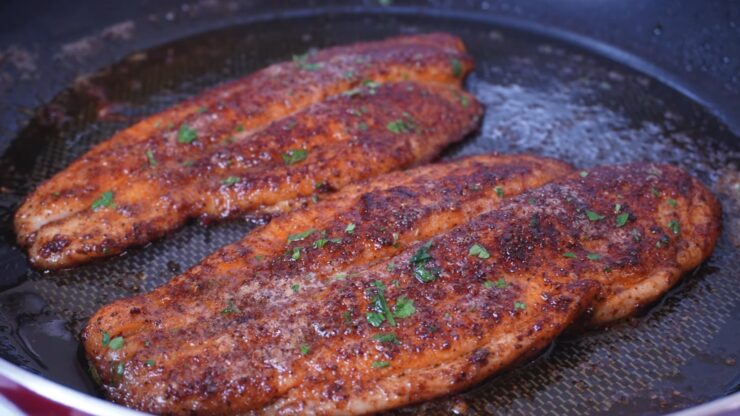
The hallmark of blackening is the searing process, which involves cooking the food at high temperatures in a cast-iron skillet, griddle, or grill. The intense heat ensures a quick sear, creating a flavorful crust on the outside while maintaining moisture on the inside.
To begin, heat the skillet or griddle over medium-high to high heat until it reaches the desired temperature. Once hot, add a small amount of oil or clarified butter to prevent sticking. Carefully place the seasoned food onto the hot surface, allowing it to cook undisturbed for a few minutes on each side. The cooking time will vary depending on the thickness of the ingredient and the desired level of doneness.
Flavor Profile
Blackening imparts a robust and smoky flavor to the food, complemented by a hint of spiciness from the seasonings. The searing process caramelizes the spices, creating a rich, savory crust that adds depth to the dish. The combination of spices, heat, and charred exterior gives blackened dishes their unique flavor profile.
Suitable Foods
While blackening is commonly associated with meats and seafood, it can be adapted to a wide range of ingredients. Some popular choices include fish fillets like red snapper, chicken breasts, shrimp, scallops, tofu, portobello mushrooms, and even vegetables such as corn on the cob or sweet potatoes. The versatility of blackening allows for endless experimentation and the creation of flavorful vegetarian and vegan dishes.
Exploring Grilling

Definition
Grilling is a popular cooking technique that involves cooking food directly over an open flame or on a heated surface. It is a versatile method that is widely embraced across various cuisines around the world. Whether you’re envisioning a backyard barbecue or a quick weeknight dinner, grilling offers a range of possibilities for both vegetarian and non-vegetarian dishes.
One of the key advantages of grilling is its ability to infuse ingredients with a smoky aroma and impart a distinct flavor that cannot be replicated through other cooking methods. This technique is not limited to any specific cuisine or dietary preference.
Grilling is celebrated in diverse culinary traditions, ranging from American barbecue to Mediterranean cuisine, Asian grilling techniques, and beyond. It allows for the expression of regional flavors and techniques, showcasing the diversity of ingredients and cooking styles.
The Process
Types of Grills
Grilling can be done using various types of grills, each offering its own advantages and flavor characteristics. Here are three common types:
- Gas: Gas grills are popular for their convenience and ease of use. They utilize propane or natural gas as a fuel source and provide precise temperature control. Gas grills are known for their quick heat-up time and even cooking.
- Charcoal: Charcoal grills use charcoal briquettes or lump charcoal as the fuel source. They offer an authentic smoky flavor and the ability to adjust heat levels by manipulating the charcoal arrangement. Charcoal grills require a longer preheating time but provide a unique, traditional experience.
- Electric: Electric grills are versatile and can be used both indoors and outdoors. They are powered by electricity and offer a smokeless option. Electric grills are often favored for their convenience and ease of use, making them suitable for apartment dwellers or those with limited outdoor space.
Preparation
Before grilling, proper preparation is key to achieving flavorful results. This includes marinating the food to enhance its taste and tenderness. Marination involves soaking the food in a mixture of herbs, spices, oils, and acids like citrus juices or vinegar. This step allows the flavors to penetrate and tenderize the food before it hits the grill.
Additionally, it’s important to preheat the grill to the desired temperature, ensuring an optimal cooking environment.
Cooking Method
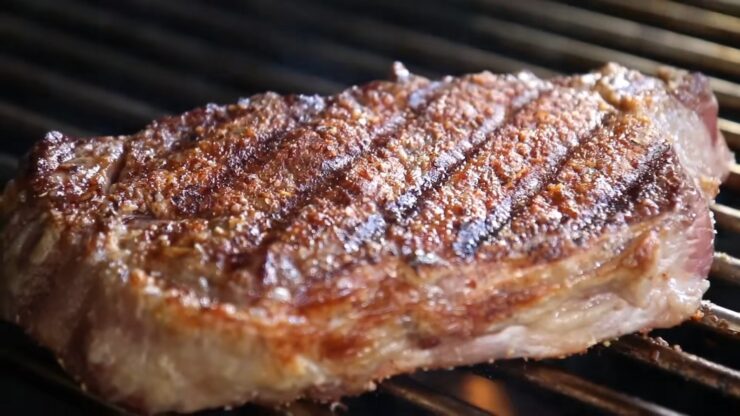
Grilling involves the direct application of heat to the food. There are two primary methods:
- Direct Heat Method: In this method, the food is placed directly over the heat source. It is ideal for thin cuts of meat, seafood, and vegetables that cook relatively quickly. The direct heat creates a sear on the outside, sealing in the juices while creating a flavorful char.
- Indirect Heat Method: With the indirect heat method, the food is placed away from the heat source, allowing for slower, more gentle cooking. This method is suitable for larger cuts of meat or delicate items that require longer cooking times. It allows for even heat distribution, ensuring that the food cooks evenly without excessive charring.
When it comes to the dance of flames in the culinary world, many enthusiasts wonder about the safety of using a propane grill indoors.
Flavor Profile
Grilling imparts a distinct smoky flavor and desirable charred texture to the food. The high heat caramelizes the natural sugars present, creating a balance of sweetness and savory notes.
The smokiness adds depth and complexity to the flavor profile, enhancing the overall taste experience. The texture of these dishes often includes a delightful combination of a crispy exterior and a juicy, tender interior.
Suitable Foods
Grilling is incredibly versatile, accommodating a wide range of ingredients. Some examples of foods that are well-suited include various cuts of meat like steaks, burgers, chicken breasts, pork chops, and sausages.
Additionally, vegetables such as bell peppers, zucchini, corn on the cob, eggplant, and asparagus can be grilled to perfection. Seafood options like salmon, shrimp, and scallops also shine on the grill, absorbing the smoky flavors beautifully.
Key Differences
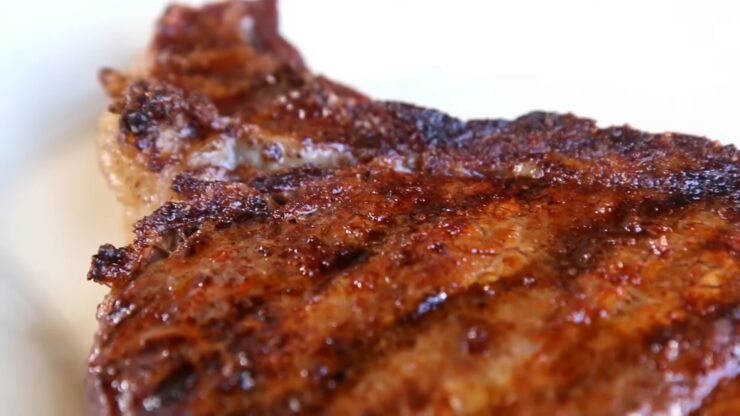
Cooking Technique
The fundamental distinction between blackening and grilling lies in the cooking technique employed. Blackening involves searing the food at high heat, typically in a skillet or griddle, to create a flavorful dark crust on the surface.
In contrast, grilling involves cooking the food over direct heat, either on an open flame or a heated surface, resulting in a charred exterior and a tender interior.
Seasonings and Flavors
Blackening relies on a specific spice blend with ingredients like paprika, cayenne pepper, thyme, and garlic powder. These seasonings create a robust, spicy flavor profile that permeates the food.
On the other hand, grilling often focuses on enhancing the natural flavors of the ingredients, relying on marinades, rubs, or simple seasoning with salt and pepper. The smokiness and char from grilling contribute their own unique flavor elements.
Texture and Appearance

Blackening creates a distinct blackened crust on the surface of the food due to the searing process and the caramelization of the spices. The crust adds a bold and visually striking element to the dish.
In contrast, grilling imparts characteristic marks and a charred exterior, which enhances the texture and visual appeal of the food.
Cooking Time and Temperature
Blackening typically involves quick cooking at high heat. The high temperature allows for the spices to form a flavorful crust while maintaining the desired level of doneness.
Grilling, on the other hand, can vary in cooking time and temperature depending on the specific ingredient being cooked. It often involves a longer cooking time at moderate to high heat, allowing for thorough cooking and the development of desired flavors and textures.
Versatility
Grilling is a highly versatile cooking method that can be applied to a wide range of ingredients, including meats, vegetables, and seafood. It accommodates various cuisines and dietary preferences.
Blackening, while adaptable to vegetarian dishes, is often associated with the specific application of Cajun cuisine, especially in the context of meats and seafood.
Cultural Context
Blackening carries strong cultural associations with Cajun cuisine, originating in Louisiana and celebrated for its bold flavors. It is deeply rooted in the culinary traditions of the region, specifically associated with the iconic dishes of New Orleans.
Grilling, on the other hand, is a popular cooking method worldwide, embraced by different cultures and cuisines. It is a versatile technique that transcends cultural boundaries, offering a universal approach to cooking with fire.
Conclusion

We have taken you through the sizzling techniques of blackening and grilling, and uncovered the distinctive characteristics and flavors associated with each method.
So, fire up the skillet or grill, don your apron, and embark on a culinary adventure. Let your creativity soar as you reimagine classic recipes and invent new ones, discovering the endless possibilities that these techniques bring to the table.

